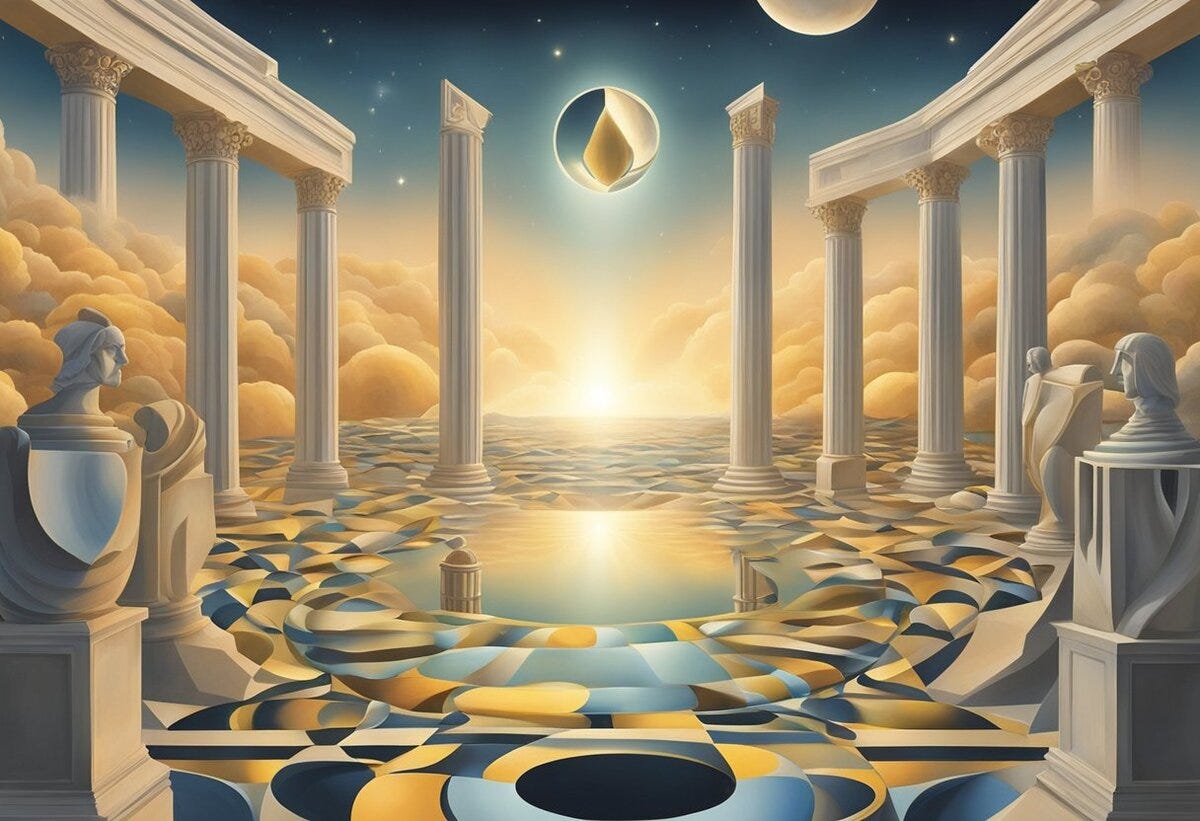Apologies for the break in our “Looking for Logos” series: it’s been a hectic year and I had to tend to other issues (electoral fraud in Venezuela, my novel published in French, etc.). Here’s hoping we can get back to the important conversations.
In our series “Looking for Logos”, we established what kind of experiences we consider “transcendent” (part I), what conditions are necessary to live a “transcendent experience” (part II), the role of silence in “awakening” experiences (part III), the role of “the flow state” (part IV) and what “higher states of consciousness” are (part V). Therefore, the last piece we need to tackle is how “higher states of consciousness” turn into “transcendent experiences” of the deep, transformative kind.
In order to do this, we have to establish the notion of Logos. I mean, the series is called “Looking for Logos” so we’re going to have to talk about this concept at some point. However, I’ve been very weary of doing so, since the standard definitions out there leave me unsatisfied; I’ve been racking my brains trying to come up with a better explanation, so let me dump it on you guys, see what you think.
Defining the ineffable
How does one talk about Voldemort? How does one refer to Beetlejuice without saying his name? The problem with Logos, as we established in part II, is that silence is a key component. Not silence in the don’t-talk kind, but in the internal-quiet kind. Only by jettisoning language will the individual open himself up to transcendence; once he starts thinking about what he lived, he comes crashing back down. How can we talk about transcendence, then?
One way would be approaching the undefinable from different angles, prodding, inquiring and rapidly retreating when the definition starts to become petrified and static. Exploring the frontiers of irrational transcendence, eschewing the linguistic translation of the world as much as possible, to then retreat and start advancing again.
Here’s our first attempt at encircling the Logos with our rationalist infantry:
The Logos as Platonic Form
One of the most popular definitions of Logos is to tie it to Plato’s form theory. Everything is a bad copy of a perfect form basking in the sun outside the cave, remember? So “Logos” would mean the “perfect chair”, the archetype/image used as a model for all the bad copies down here. In this reading, the “transcendent experience” pushes you to have a glimpse of the “perfect chair” outside the cave, but when you say or think, “Voilà ! The perfect chair!”, you’ve poisoned the experience with language (hence with time) and you disconnect from the bliss and light of the chair, crashing back down into our corrupt world of Fat Boy Futons and ghastly designer stools worth thousands of dollars.
However, this path of inquiry doesn’t really tell us what the Logos is; we’re just pointing at the thing outside the cave and saying, “Logos is what allows the perfect chair to be”, which again, isn’t saying much (see our entry on Heidegger).
The Logos As Eidos
Let’s stop with “Logos as perfection/perfect form” and try to tackle the problem from a different angle. A more suitable definition appears if we trace the Platonic concept Eidos back to its origins. Eidos can be translated as “form”, but this is a cruel misrepresentation. Eidos encompasses the “sight”, “aspect” or “look” of something, but it is a lot bigger: Eidos refers to the thing that makes a thing a thing. It’s not just the “form”, it’s the essence that holds it together.
Think of it like this: if you take the different parts of a dead animal—it’s head, it’s arms and legs, etc.—, put them back together again and run electricity through the corpse à la Frankenstein, the animal doesn’t come back to life. Why? All the parts are there, all the organs, all the necessary energy and the like. What’s missing? Logos is missing. Logos: the thing that holds the animal together, that makes it a thing that exists, not a collection of parts.
So Eidos is the “form” of things, in the sense that it’s that “form” that keeps it all together and running, that allows it to be. Plato, being the idealist that he was, thought that this Eidos was transcendent, unchanging and perfect. He also thought it was non-physical and impossible to apprehend through the senses, relying on the intellect to intuit its existence.
Let’s stop here for now. We won’t be taking the metaphysical route exposed by Plato, because it’s only going to confuse things (as whole branches of philosophy willing to tread that path discovered later on). So all the part about Eidos being “perfect, unchanging and transcendent”, we’ll just bracket. For our anthropo-onthological quest, the nature of Eidos is inconsequential.
All we need to establish here is the idea of “form”/”Eidos” as the thing that holds it all together, that makes it be. It doesn’t matter if you call it the “soul” or think it’s atemporal: let’s just establish this notion as one of our central building blocks as we advance in search of the ever evasive Logos.
Next time, we’ll resume our anthropo-onthological excavations from a different perspective: the Big Bang and the notion of enthropy, as we look for manifestations of Logos around us before tying it all together as a transcendent experience.


